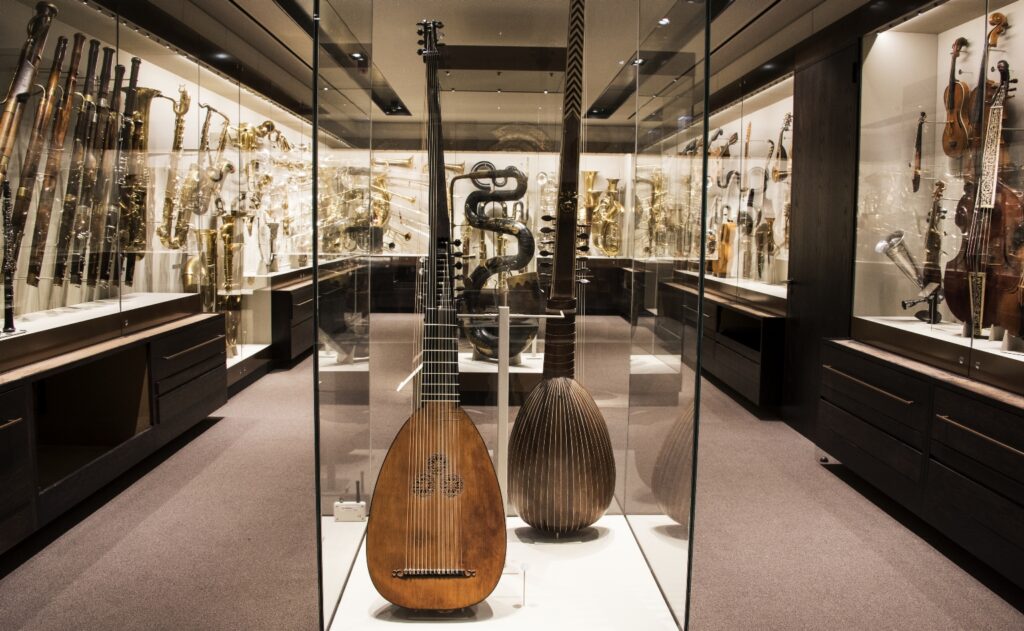In this blog, Veronica Wilson discusses her project working with musical instruments in storage. Veronica started this project as a Thompson-Dunlop Intern and then joined the Conservation & Collections Management team as a Library Assistant (funded by Thompson-Dunlop endowment and the Nagler bequest).

Wolfson gallery at St Cecilia’s Hall
The University of Edinburgh holds a rare and unique collection of musical instruments. Many stand proudly on display in St Cecilia’s Hall, the music museum of the University, visible to the public and played by musicians from around the world. The rest are in storage, available only by request for research, study, or viewing. The collection at the University Collections Facility (UCF) consists of instruments too large to be stored in any of the other locations. Though the time since they were last played can span lifetimes, the collection is anything but silent.
